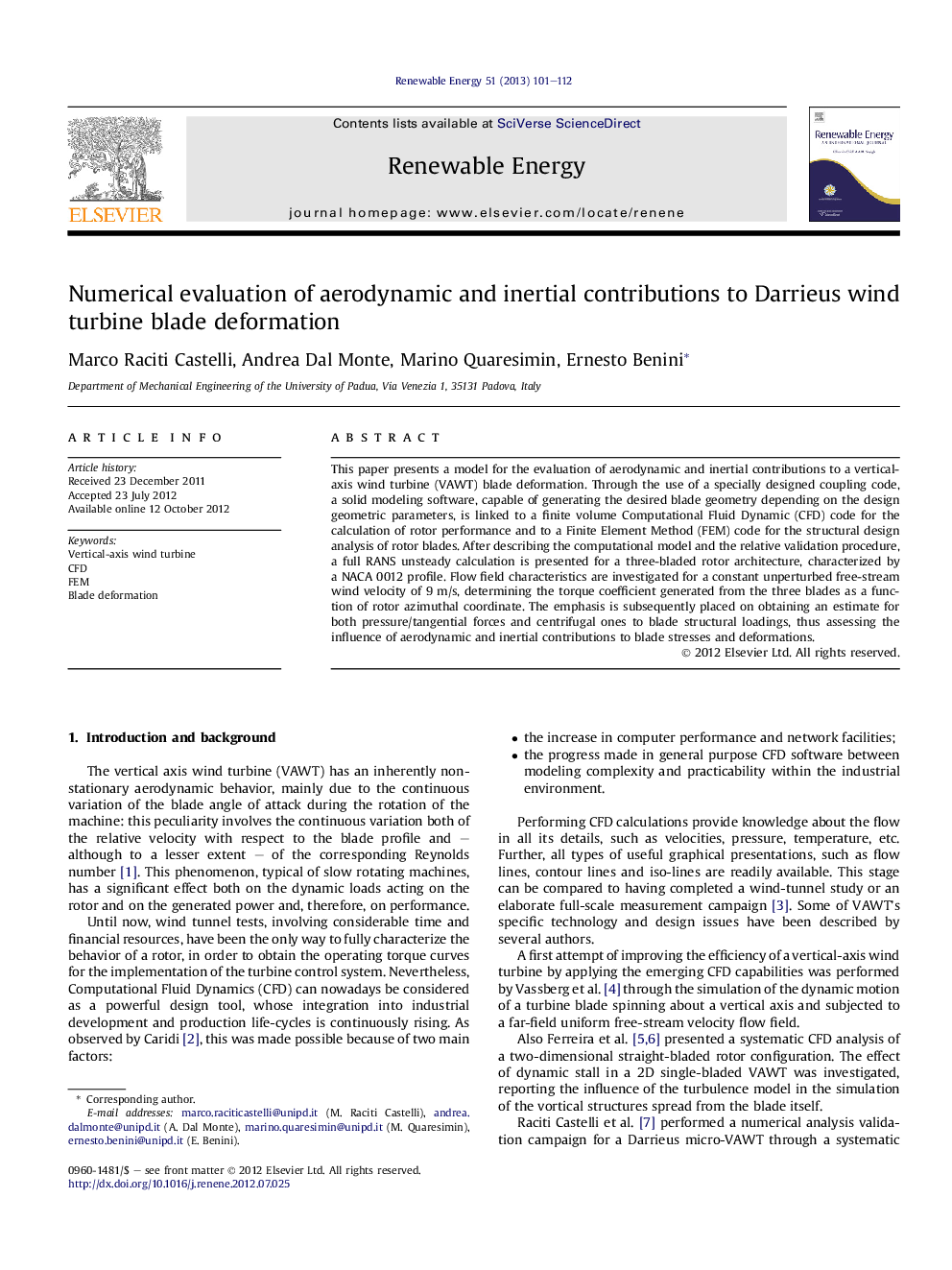| Article ID | Journal | Published Year | Pages | File Type |
|---|---|---|---|---|
| 300608 | Renewable Energy | 2013 | 12 Pages |
This paper presents a model for the evaluation of aerodynamic and inertial contributions to a vertical-axis wind turbine (VAWT) blade deformation. Through the use of a specially designed coupling code, a solid modeling software, capable of generating the desired blade geometry depending on the design geometric parameters, is linked to a finite volume Computational Fluid Dynamic (CFD) code for the calculation of rotor performance and to a Finite Element Method (FEM) code for the structural design analysis of rotor blades. After describing the computational model and the relative validation procedure, a full RANS unsteady calculation is presented for a three-bladed rotor architecture, characterized by a NACA 0012 profile. Flow field characteristics are investigated for a constant unperturbed free-stream wind velocity of 9 m/s, determining the torque coefficient generated from the three blades as a function of rotor azimuthal coordinate. The emphasis is subsequently placed on obtaining an estimate for both pressure/tangential forces and centrifugal ones to blade structural loadings, thus assessing the influence of aerodynamic and inertial contributions to blade stresses and deformations.
► Methodology for vertical-axis Darrieus wind turbine performance prediction including blade deformation. ► CFD and FEM coupled for calculation of rotor performance and for structural design analysis of rotor blades. ► Performance as a function of azimuthal blade positions using fully unsteady aerodynamics. ► Estimation of both pressure/tangential forces and centrifugal forces to blade structural loadings. ► Assessment of the influence of aerodynamic and inertial contributions to blade stresses and deformations.
